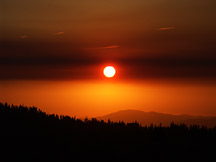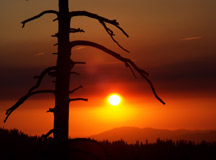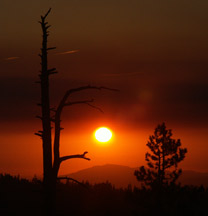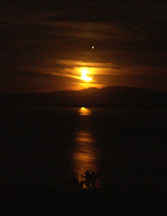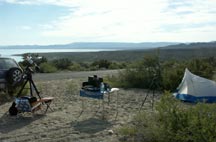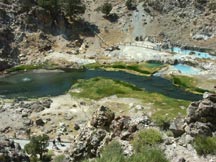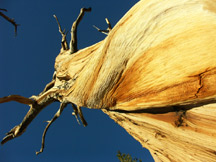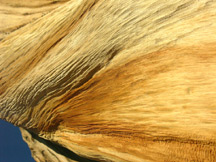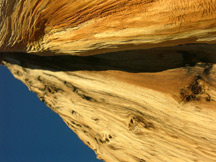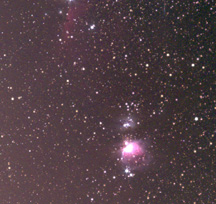
Galaxy M33.
~12x5min stack, from Grandview. This image shows the danger of doing
reductions in a hypoxic state. I dark subtracted and flat-fielded the
component images while carrying on a conversation with fellows at Barcroft
Labs after 3 all-nighters and at 12,500 ft. I subtracted the wrong dark
frame - using the -35C frame instead of the -29C frame, meaning I only
subtracted about 40% of the noise I should have. You can see the strong
color speckle'ing which remains. I'll see if it's possible to add back
the wrong dark and then re-subtract the right one.
|

The Bubble Nebula
and open cluster M52 in Cassiopeia. 11x5min stack on from Grandview.
The individual frames had an alarming amount of color speckling. Why?
enhanced cosmic rays at high altitude? But the 55 minute stack reduces
this greatly. Rotated, cropped, unsharp masked, curves, brightness and
contrast adjusted in Photoshop 7
|

The Snake Nebula
in Ophiuchus. 9x5min (45min) stack at Tchip=-29C
from Grandview. Again, an unusual amount of color speckling. For this
one I used Photoshop CS2's de-speckle to minimize. Low altitude and
less attention to clamping the camera in the draw tube, led to a tilted
image plane and soft focus towards the bottom. Cropped, 'smart sharp',
levels in CS2.
|
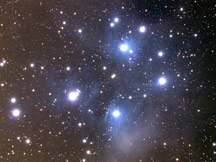
The
Plieades. 11x5min
stack at Tchip=-29C from Grandview. CS2 Levels,
Despeckle, 'Smart sharpen'. Saturation +6, AstroActions: smaller stars,
deep space noise reduction. Comparing to the ECU star field, the faintest
star on ECU is m=15.1, and this one is quite easy to see. I estimate the
limiting magnitude is about m=18. |
 I
definitely needed a get-out-of-town adventure this summer and this was it. But
the first couple of hours were miserable - bumper to bumper traffic from Santa
Cruz all the way to Manteca and the Central Valley. On a thursday! Get me outta
here! By the time I got to Oakdale it was better, and reaching the upper elevations
of Yosemite I'd fully recovered from the effects of civilization. My planning
page is here, and the Barcroft
Lab information page is here. A magnificent sunset in the Yosemite high
country started the photography off well.
I
definitely needed a get-out-of-town adventure this summer and this was it. But
the first couple of hours were miserable - bumper to bumper traffic from Santa
Cruz all the way to Manteca and the Central Valley. On a thursday! Get me outta
here! By the time I got to Oakdale it was better, and reaching the upper elevations
of Yosemite I'd fully recovered from the effects of civilization. My planning
page is here, and the Barcroft
Lab information page is here. A magnificent sunset in the Yosemite high
country started the photography off well.